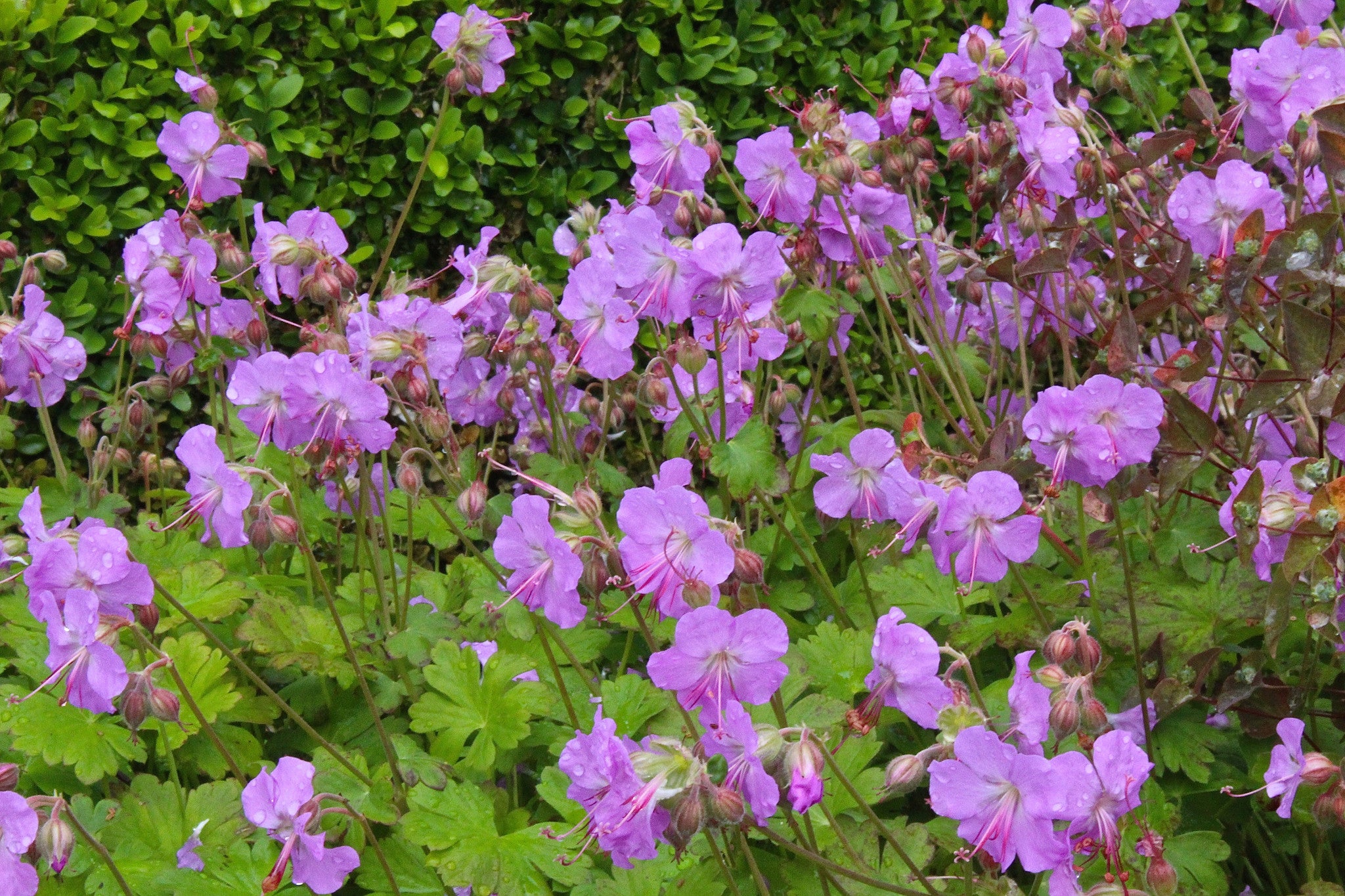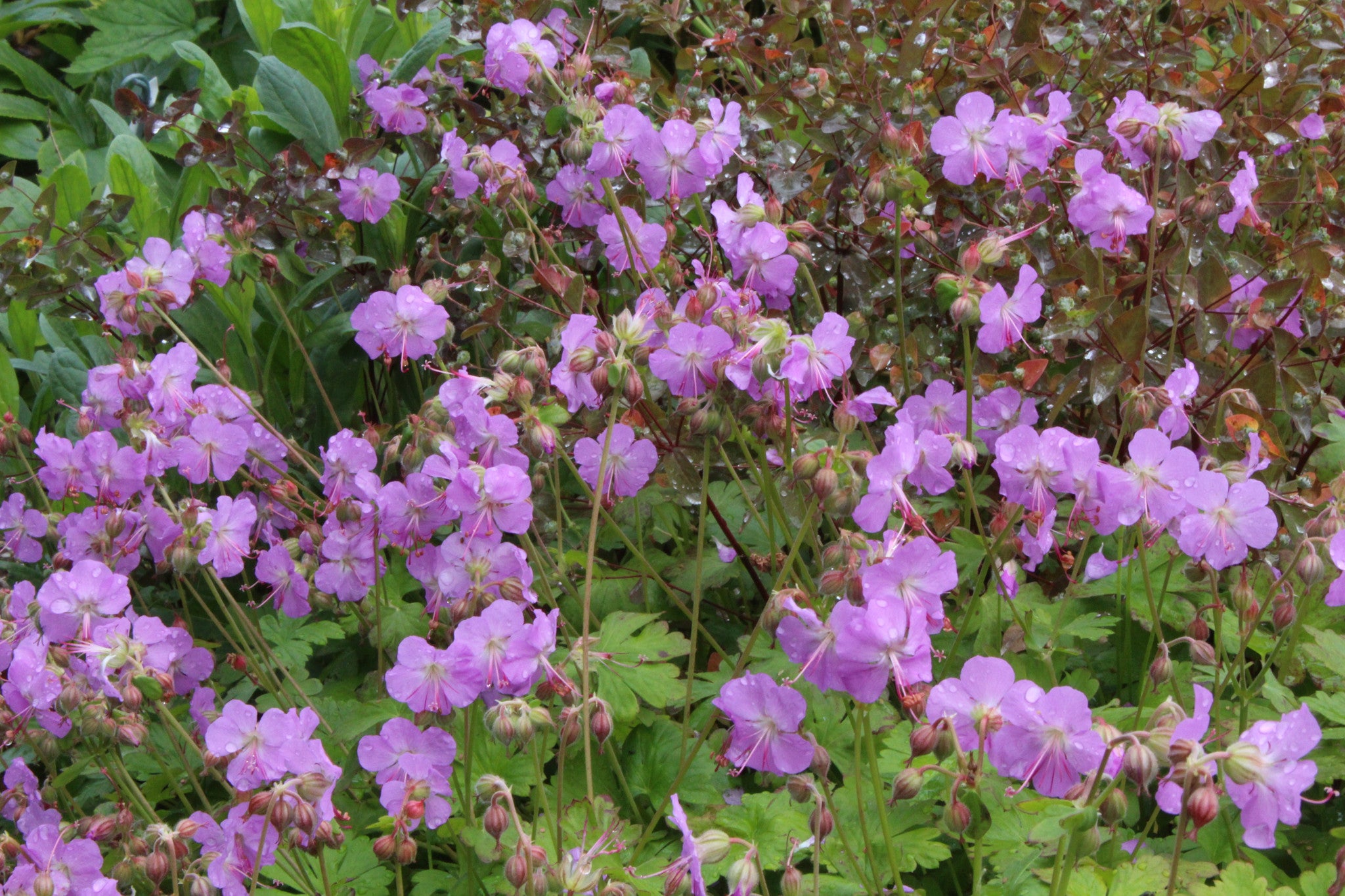Geranium x cantabrigiense 'Karmina'
Approx. 0.5 litre pot
About this cultivar:
Geranium x cantabrigiense 'Karmina' features masses of 5-petaled, bubble-gum pink flowers which bloom from late spring. It's a low-growing spreader that can quickly form a respectable carpet. The cultivar name means 'song' in latin.
Geranium x cantabrigiense is a sterile hybrid geranium developed in 1974 by Dr. Helen Kiefer of the Cambridge University Botanic Garden in Cambridge, by crossing G. macrorrhizum (female parent) and G. dalmaticum (male parent). The hybrid name of cantabrigiense thus comes from the Latin word Cantabrigia meaning of or pertaining to Cambridge. Plants spread by trailing stems to form a foliage carpet up to 30cm/12 inches tall spreading up to twice as wide or more. The foliage consists of aromatic, deeply-cut, 7-lobed, glossy light green, palmate, semi-evergreen leaves. Long-persisting flowers bloom from late spring into early/mid-summer with a sporadic rebloom sometimes continuing to autumn. Plants generally grow well in rock gardens or as ground covers.
- Position: Full sun, partial shade
- Soil: Almost any soil, grows well in Ballyrobert
- Flowers: June, July, August
- Other features: Grows well in Ballyrobert
- Hardiness: Fully hardy - grows well in Ballyrobert!
- Habit: Clump forming, bushy, trailing
- Foliage: Semi evergreen
- Height: 15 - 30 cm (0.5 - 1 ft)
- Spread: 15 - 30 cm (0.5 - 1 ft)
- Time to full growth: 2 to 5 years
- Plant type: Herbaceous Perennial
- Colour: Green, pink
- Goes well with: -
About this genus:
Geranium is a genus of 422 species of flowering plants found throughout the temperate regions of the world and the mountains of the tropics, They come in a variety of shapes and sizes and the five-petaled-flowers can be white, pink, purple or blue, often with distinctive veining. The genus name is derived from the Greek géranos meaning ‘crane’. The common name is‘cranesbill’. Why the crane reference? Well, some species in the Geranium genus have a distinctive mechanism for seed dispersal. This consists of a column which springs open when ripe and casts the seeds some distance. The shape of the unsprung column looks like the bill of a crane- therefore cranesbill!
Geranium is often confused with its close cousin Pelargonium (florist geranium). The two plants were originally lumped into the one genus (genus Geranium), but in the 1780s, the genus Pelargonium was split from Geranium. However, by that time the common name "geranium" for the florists plants was part of the public vernacular and it stuck.
Geraniums are not as flashy as many perennials, but are getting more and more popualr again as newer cultivars become more floriferous and for longer. The attractive foliage of Geraniums, combined with their blendable, butterfly-attracting, spring and summer flowers, make geraniums staples in the perennial garden.
The genus geranium has long been recognized as one of the most durable and easy to grow perennials for the garden. They love sun or part shade and will grow in any soil that isn't waterlogged.
How to use them? Oh, the list is endless and often depends on the specific geranium, its height, habit and colour - they are not just "ground cover" plants!




